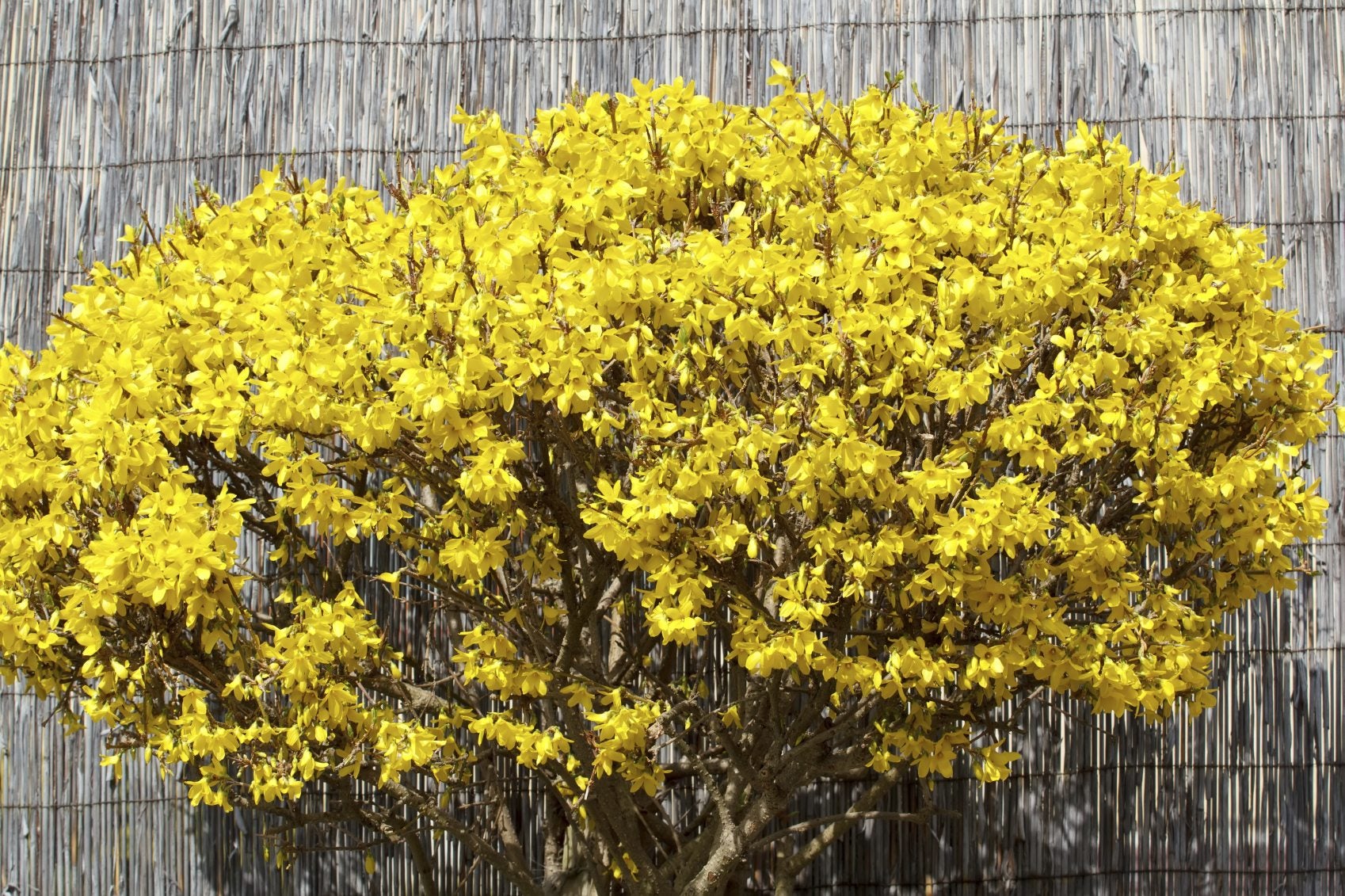Varieties Of Forsythia: What Are Some Common Forsythia Bush Varieties


Known for its bursts of brilliant yellow color that arrive even before the first leaf unfurls, forsythia is a delight to behold. Find out about some popular forsythia varieties in this article.
Mixing Shrubs with Forsythia Bush Varieties
Despite its bright spring color display, forsythia isn’t meant to be a specimen or stand-alone plant. The color lasts only three weeks at most, and once the flowers are gone, forsythia is a plain Jane of a plant. The foliage isn’t particularly attractive and for most forsythia bush varieties, there is no pretty fall color. You can overcome the shrub’s limited season by surrounding it with other shrubs to create a border with several seasons of interest. Don’t forget to include a forsythia in the mix because you won’t find another shrub that blooms as early or more prolifically.
Varieties of Forsythia
There isn’t much variety of color in the different types of forsythia. All are yellow, with only subtle variations in shade. There is a white forsythia, but that is a completely different plant belonging to a different botanical family. There are, however, differences in the size of the shrub and enough variation in bloom times that you can extend the season a couple of weeks by planting different varieties. Here are some of the most popular varieties:
- 'Beatrix Farrand' is one of the largest forsythias, measuring up to 10 feet (3 m.) tall and wide. It also has some of the largest flowers, measuring about 2 inches (5 cm.) in diameter. This is a graceful, fountain-shaped shrub. Other types are often compared to ‘Beatrix Farrand’ because it is considered superior in flower color and size as well as habit and vigor.
- 'Lynwood Gold' flowers aren’t as large or as vibrant in color as ‘Beatrix Farrand,’ but it flowers reliably year after year without a lot of attention. It is more upright than ‘Beatrix Farrand’ and measures about 10 feet (3 m.) tall and 8 feet (2 m.) wide.
- ‘Northern Gold’ is a golden yellow, cold hardy variety. It flowers even after a severe winter, tolerating temperatures as low as -30 degrees F. (-34 C.). It is a good choice for windswept areas. Other cold-hardy types include ‘Northern Sun’ and ‘Meadowlark.’
- ‘Karl Sax’ blooms two weeks later than other types. It is bushier than 'Beatrix Farrand' and grows about 6 feet (2 m.) tall.
- ‘Show Off’ and ‘Sunrise’ are mid-sized shrubs that measure 5 to 6 feet (1.5-2 m.) tall. Choose ‘Show Off’ if you want to cut branches for indoor arrangements and ‘Sunrise’ if you prefer a mounding shrub that has a touch of fall color and looks great in the landscape.
- Golden Peep, Goldilocks, and Gold Tide are dwarf, trademarked varieties. They are compact and measure around 30 inches (76 cm.) tall. These little shrubs make good groundcovers.
Sign up for the Gardening Know How newsletter today and receive a free copy of our e-book "How to Grow Delicious Tomatoes".

Jackie Carroll has written over 500 articles for Gardening Know How on a wide range of topics.